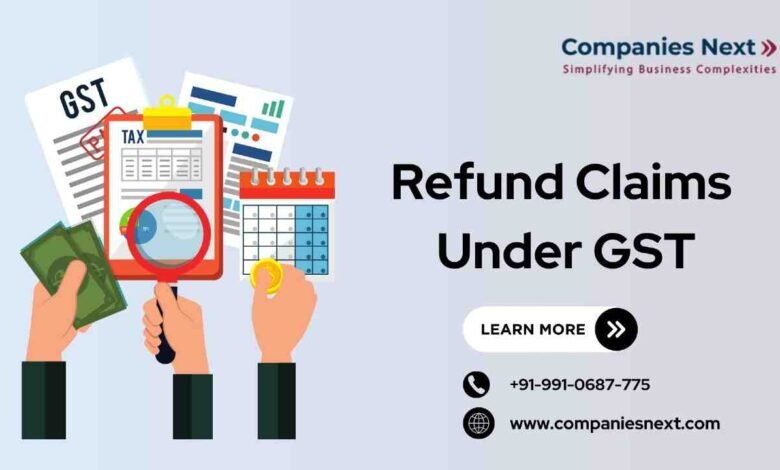A Comprehensive Overview of GST Refund Claims in India

The Goods and Services Tax (GST), introduced on July 1, 2017, has revolutionized India’s tax system, aiming to unify and streamline indirect taxes across the country. A critical component of GST is the provision for taxpayers to claim refunds under specific circumstances. Understanding the intricacies of GST refund claims is crucial for businesses and individuals to manage their tax liabilities efficiently and enhance cash flow. This article provides an in-depth exploration of GST refund claims in India, covering types of refunds, the process for claiming them, and essential considerations.
Types of GST Refund Claims
Under GST, taxpayers can claim refunds for various scenarios:
- Refund of Excess Input Tax Credit (ITC):
- Businesses can claim a refund when the credit of taxes paid on inputs exceeds their output tax liability. This commonly occurs in industries involved in exports or those with zero-rated supplies.
- Refund of Excess Cash Balance:
- If the amount of GST paid in cash is more than the total GST liability for a given period, taxpayers can apply for a refund of the excess cash balance.
- Refund on Account of Inverted Duty Structure:
- This refund arises when the tax rate on inputs is higher than on the outward supplies. Manufacturers and suppliers can claim a refund for the accumulated input tax credit under this structure.
- Refund for Supplies to SEZs and Exporters:
- Suppliers making supplies to Special Economic Zones (SEZs) or Export Oriented Units (EOUs) can claim refunds on taxes paid for such supplies.
Also Read: Homework Reform: Strategies for a More Effective Approach
Process of Claiming GST Refunds
The process for claiming GST refunds involves several steps:
- Filing of Refund Application:
- Taxpayers must file an online refund application using Form GST RFD-01 on the GST portal (www.gst.gov.in). It is essential to provide accurate details and attach supporting documents relevant to the type of refund claimed.
- Verification and Processing:
- Upon submission, the tax authorities verify the application and supporting documents. Additional information may be requested for verification purposes.
- Refund Sanctioning:
- Once the application is verified and approved, the refund amount is sanctioned by the tax authorities. The sanctioned amount is credited directly to the taxpayer’s bank account through the electronic credit ledger.
- Rejection and Appeals:
- In case of rejection, taxpayers are informed of the reasons. They have the option to appeal against the decision to the appropriate appellate authority.
Also Read: Custom Size Table Top: A Fusion of Fashion and Functionality
Key Considerations for GST Refund Claims
Successful GST refund claims require attention to the following considerations:
- Documentation: Ensure all invoices, shipping bills, and relevant documents are accurate and readily available for submission.
- Timeliness: File refund claims within the specified timelines to avoid delays and penalties.
- Compliance: Adhere strictly to GST rules and regulations to prevent discrepancies and ensure smooth processing of refund claims.
- GST Portal Usage: Familiarize yourself with the GST portal for efficient filing and tracking of refund applications.
Conclusion
GST refund claims serve as a crucial mechanism for taxpayers to recover excess taxes paid under specific circumstances. Understanding the types of refunds available, the procedural steps involved, and adhering to compliance requirements are essential for efficient tax management. By staying informed and compliant with GST regulations, businesses and individuals can navigate the refund process effectively, optimizing their financial resources within the GST framework.
In conclusion, while GST has simplified India’s tax structure, mastering refund claims is essential for ensuring compliance and efficiency across various sectors of the economy.
Source: https://www.companiesnext.com/

